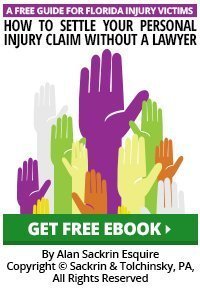Last Update: 02/01/16
The coverage given to recent lawsuits filed against the National Football League, regarding permanent injuries from concussions sustained by football players which have led to lifetime disabilities or death, have increased public awareness of the dangers of playing football and head injuries. Because of this increased media coverage, parents and coaches are now paying closer attention to the risks of head injuries to children caused not only from playing football, but from other sports as well.
Dangerous Sports Injuries — It’s Not Just Football
News coverage is bringing to light that other sports besides football also bring with them the real danger of concussion and other serious sports related injuries. Baseball players, for example, are also at risk for head injuries. (See the recent story of a former professional baseball player, Ryan Freel, who suffered, at the time of his death, from chronic traumatic encephalopathy (CTE), a degenerative brain disease resulting from concussive brain injury.)
The reality that sport-related concussions and head injuries can result not only from collision-type activities (like football), but from other sporting activities – like in baseball, where players, for example, routinely fall to the ground and slide to avoid being tagged out – is starting to garner attention.
Baseball falling injuries can be as serious as football tackling injuries? Maybe — yes, if a head injury is involved. In fact, Major League Baseball has already announced that home-plate collisions will be banned from professional baseball by the year 2015. (Lots of baseball players are not happy about this.)
Children Playing Sports – Injuries From Falls, Concussions
Kids love sports, and athletic programs are good for children in so many ways: not just for physical prowess, but for the lessons that can be learned from team participation, competitive events, practicing to gain expertise in an area, self-confidence, etc. However, the reality that school sports are a real danger for children, particular in the case of head injuries and concussions, is still being realized and recognized in Florida and around the country.
In fact, and in an effort to raise awareness, the Centers for Disease Control are promoting the federal government’s “Heads Up: Concussion in Youth Sports” program as a way to educate parents, teachers, trainers, coaches, and players about the real possibility of a head injury concussions while kids are playing sports.
The CDC advises coaches in all kinds of children’s sports to be vigilant in monitoring the kids for head injuries and concussions, warning coaches that, they not only should watch for the following but also instruct others there on the field (other coaches, trainers, spectators, parents, etc.) to look for two things:
1. A forceful bump, blow, or jolt to the head or body that results in rapid movement of the head.
2. Any concussion signs or symptoms, such as a change in the athlete’s behavior, thinking, or physical functioning.Specifically, the CDC advises coaches that:
Signs and symptoms of concussion generally show up soon after the injury. But the full effect of the injury may not be noticeable at first. For example, in the first few minutes the athlete might be slightly confused or appear a little bit dazed, but an hour later he or she can’t recall coming to the practice or game. You should repeatedly check for signs of concussion and also tell parents what to watch out for at home. Any worsening of concussion signs or symptoms indicates a medical emergency.
For more information, see Gilchrist J, Thomas KE, McGuire LC, Coronado V. , “Nonfatal Traumatic Brain Injuries Related to Sports and Recreation Activities Among Persons Aged ≤19 Years — United States, 2001–2009,” MMWR 2011; 60(39);1337-1342.
What Should You Do?
A good piece of advice if you have been harmed in a slip and fall, is to at least speak with an experienced personal injury lawyer before you file a claim to learn about some of the issues that can arise with these claims, including the type of evidence needed to prove a claim and the type and amount of damages you can recover. Most personal injury lawyers, like Alan Sackrin, will offer a free initial consultation (over the phone or in person) to answer your questions.
Related:
- Slip/Trip and Falls in Florida
- Has Your Child Been Hurt While Away at Camp? Camp Safety for Kids and Claims Against Camps for Injuries to Children
- What are types of pain and suffering damages you can recover in a Florida slip and fall lawsuit?
______________
 Do you have questions or comments? Then please feel free to send Alan an email or call him now at (954) 458-8655.
Do you have questions or comments? Then please feel free to send Alan an email or call him now at (954) 458-8655.
If you found this information helpful, please share this article and bookmark it for your future reference.
